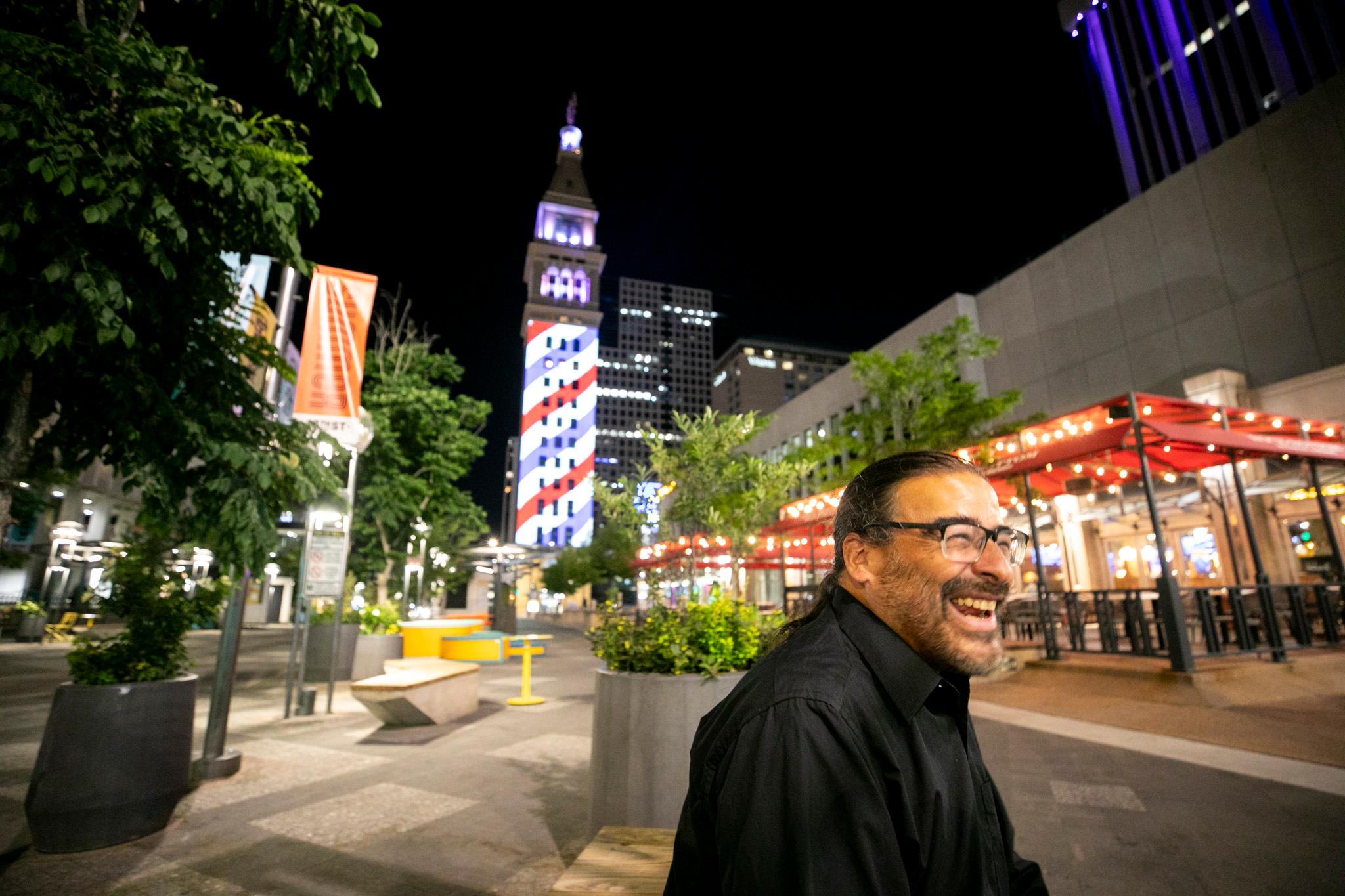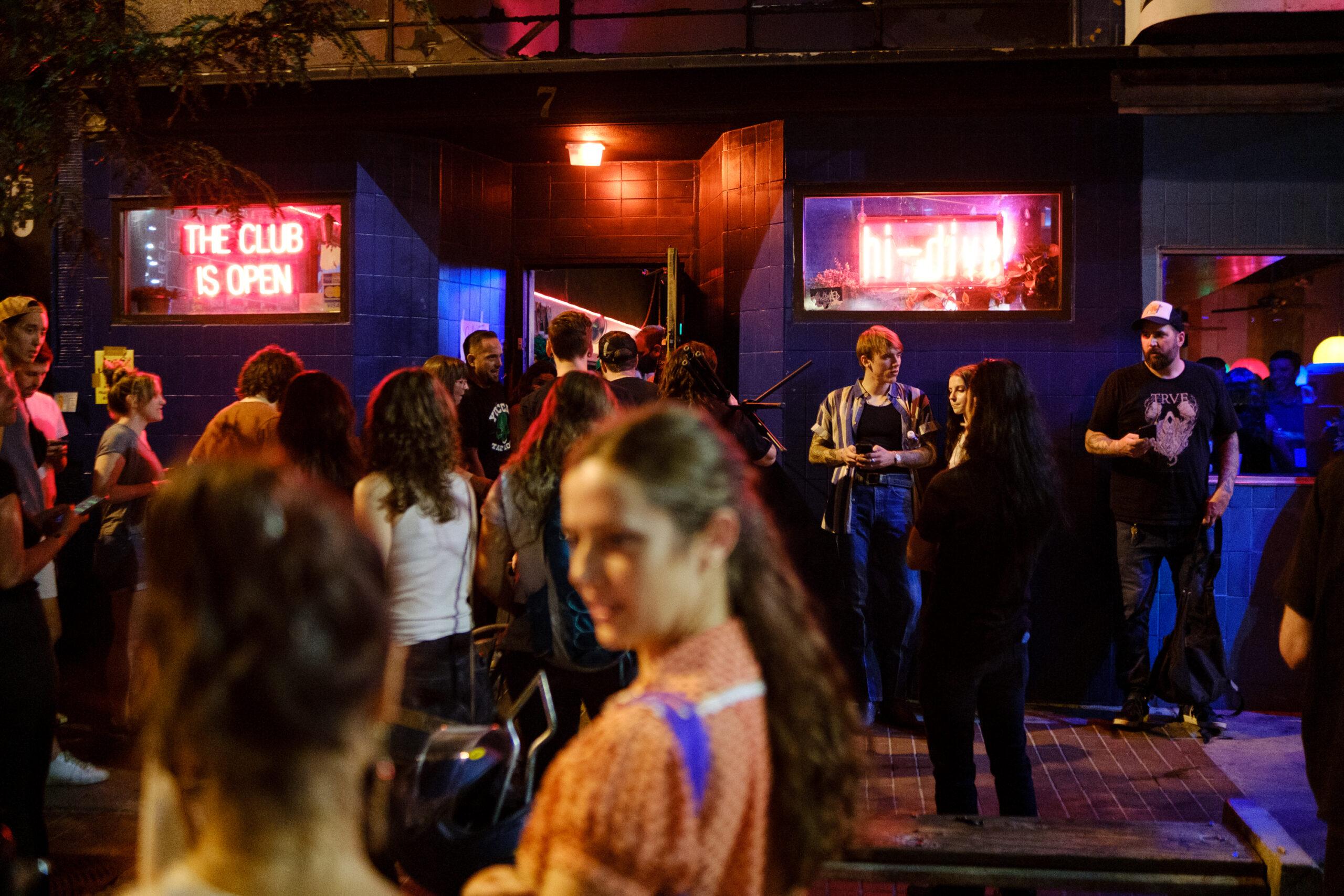
While Denver's Brighton Boulevard was rebuilt for yoga and coworking, the Salvation Army's Crossroads homeless shelter there steadily grew more dangerous. In fact, fire officials say the building for a time was so overcrowded and ill-maintained that it was primed for a catastrophe that could have killed many of the people staying there.
“It would have been very serious. There would have been major loss of life. You have 800 people, and you’re putting them into a building that can’t accommodate 800 people,” said Manny Almagure, Denver’s division chief for fire prevention, referring to the shelter's most crowded days this winter.
City officials and the Salvation Army say a surge in homelessness caught them off guard, leaving Denver at risk of a disaster at its most populated homeless shelter.
While the city's homeless services agency knew the shelter's population was rising, the fire department officials in charge of building safety say they weren't aware. As a result, a warehouse with a deficient sprinkler system and an emergency exit that opened to a sheer drop was allowed for weeks to take on hundreds more people than city standards permitted. Meanwhile, other facilities had room to spare.
The most serious issues have since been addressed, but the Crossroads building still isn't up to city requirements -- and it may never be.
The changes now in motion likely will result in the Salvation Army demolishing the building and redeveloping it as affordable housing, posing a significant new challenge for the city's shelter system. Homeless advocates say the episode shows the hypocrisy of Denver laws that allow homeless people to be penalized for sleeping outside.
This winter, inspectors found hundreds more men in the Crossroads building than city codes allowed.
Among the violations noted by inspectors: A sprinkler system failed to cover critical parts of the building. At times, two emergency exits opened to drops of four and six feet. Portable toilets were kept indoors, their stench permeating the building, because the building had just 11 permanent toilets and three urinals for hundreds of men.
One man who relied on a wheelchair said a table blocked his emergency exit route for weeks, despite his direct requests to management. Two clients told Denverite that they witnessed fire drills that took longer than 10 minutes to clear the building, though the Salvation Army disputes that estimate.
When city officials first spoke with the Salvation Army about these conditions, Almagure said, the reaction was not denial but surprise.
“I wouldn’t say it was adversarial. I would say that it was, ‘Why now?’” Almagure said. “Why not in years past?”
Dan Starrett, the regional leader of the Salvation Army, said that the city and the charity alike were “caught off-guard,” tracing many of the problems to increasing demand for shelter and the charity's reluctance to turn men away.
“We don’t say no. It really is that simple. We don’t say no,” he said. “And that will probably always get me in trouble with authorities.”
Today, the sprinkler system is fixed and the population reduced. However, fully bringing the shelter up to standards could cost more than $1 million, according to the religious organization. Instead, the Salvation Army may replace the city’s largest emergency shelter with high-density affordable or transitional housing.
The city, meanwhile, has recently pledged new money for shelter construction, and staffers say they'll watch more carefully to prevent the return of dangerous conditions.
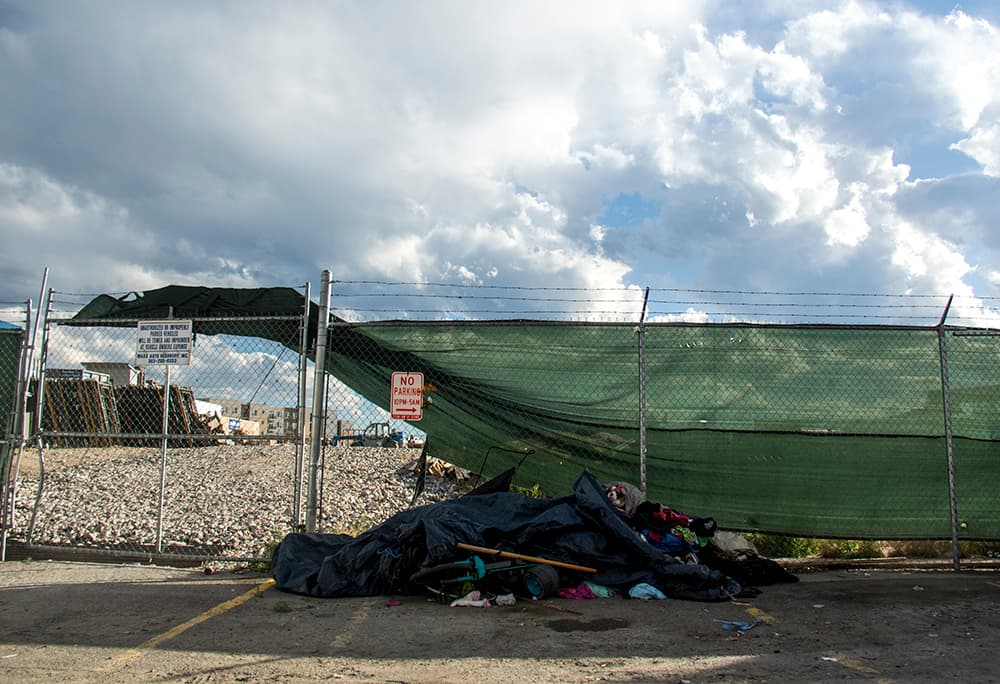
How did a service for one of Denver’s most vulnerable populations become so dangerous?
Was it an oversight or a blind eye?
“There’s an almost intentional disconnect, a hand-washing … ,” said Miguel Geronimo, a journalist who has lived in and out of Denver’s homeless services system.
“How could you not address the blatant fire issues, safety issues with this shelter for so many years?”
To Marcus Hyde, a member of Denver Homeless Out Loud, it undermines the city's claims that it's acting in the name of safety when it breaks up homeless encampments along the South Platte River. Denver faces a class-action lawsuit that alleges it violated constitutional protections in the sweeps.
“You can’t force charity on people, especially when charity comes with bedbugs and the potential of getting stabbed and no sleep," Hyde said.
Robert Joseph, who has lived in and out of shelters throughout his adult life, put it this way: "Why would we want the conditions worse than we got outside?"
In search of answers, Denverite reviewed inspection records from the city’s fire, health and building departments for Crossroads and seven other shelters within city limits. Others had problems with bedbugs and improper food preparation, but none of the others were reported for such serious structural safety concerns. This research also included interviews with the Salvation Army, homeless advocates, people experiencing homelessness and city officials.
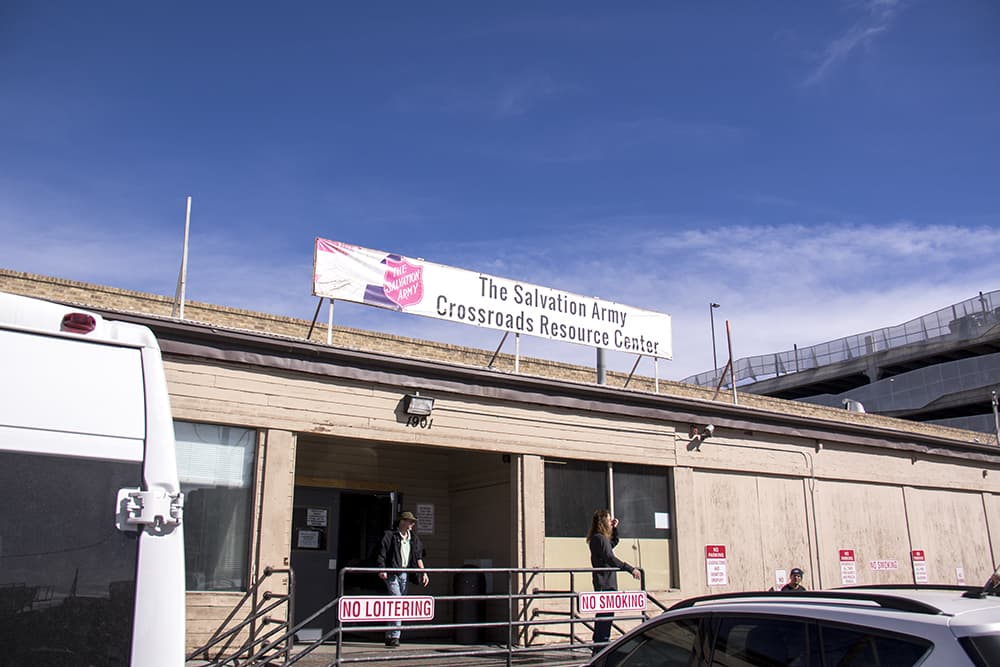
The last several years have radically changed the experience inside Crossroads.
The Salvation Army has sheltered homeless men near Brighton Boulevard and 29th Street since the early 2000s, when it received the aging building as a donation. In its previous life, the warehouse was filled with flowers awaiting delivery.
Now its concrete floors fill each night with sleeping men. Men line up early in the evening in a fenced courtyard behind the building, receiving a clean white blanket and sheets on their way in.
If they’re sober, they can rent a bed in one of the long rows for $59 a week. A few dozen men stay long-term in dormitories with beds and desks on the second floor, part of a program that includes counseling and education.
Hundreds more sleep for free on mats in cavernous rooms. The sleeping areas are marked by the same yellow lines that once told forklift drivers where to stack pallets.
In the last seven years, demands on the building have increased in staggering proportions. Staff at Denver's Road Home say that the demand for shelter last winter was "unprecedented." This occurred as the city stepped up its ongoing efforts to break up homeless camps, which it describes as public health hazards. Videos on at least two occasions showed police confiscating tents and other survival gear from campers. On one occasion, police justified the confiscations as "evidence" of camping ban violations.
“As a city, we have a responsibility and moral obligation to protect the lives of our residents. Urban camping-- especially during cold, wet weather -- is dangerous and we don’t want to see any lives lost on the streets when there are safe, warm places available for people to sleep at night," Mayor Michael Hancock said as he ordered an end to the confiscations.
The Salvation Army has ramped up its operation in response and now operates the shelter with a crew of 25. The building is scrubbed clean just hours after the last men leave on a weekday morning. It's by all appearances a tidy and efficient operation, especially given its size and the incredible demands that the organization has taken on.
At times, city officials recorded population figures higher than 700, and fire prevention chief Almagure cited the figure of 800 in an interview. With those figures, Crossroads on some days was hosting about half of the city's estimated shelter population, nearing the capacity of the next two largest shelters combined. There were other options, though: Denver Rescue Mission averaged about 170 open beds this winter between its Lawrence Street facility and the city's emergency shelter, which the Rescue Mission operates.
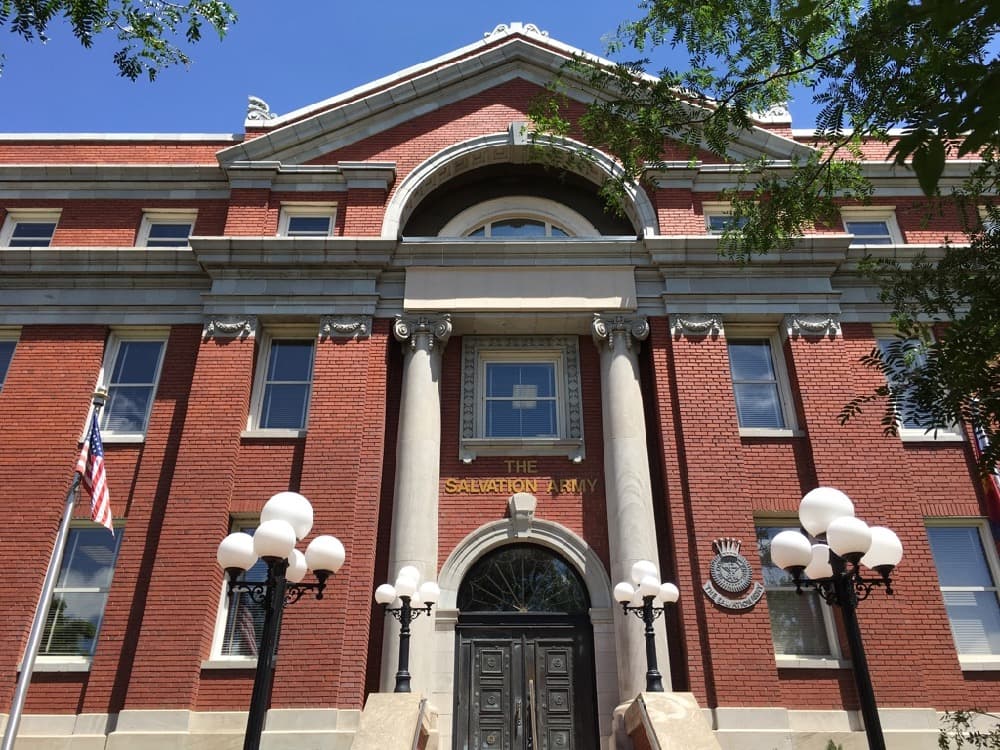
Inspectors started reporting problems a little over a year ago.
It’s hard to say when the Crossroads building’s condition became dangerous. Until recently, fire inspectors would come by annually and leave with practically empty notebooks. None of their reports contained a hint of anything wrong.
That changed in 2016. That February, an inspector found that the charity was doing significant work on the building without city permission. “Electrical, walls put in, plumbing and hot water put in without permit,” city records note.
In June, an inspector from another city department found that the shelter was keeping three outdoor portable toilets near sleeping areas inside the building, leaving a “strong stench throughout the shelter.”
An inspector with the city Department of Environmental Health wrote a letter demanding the nonprofit cease and desist the unsanitary practice. A week later, he found that management had ignored the order.
A manager of the facility, “refused to attempt alternate solution. Belittled me the entire conversation,” the inspector noted. Starrett said he wasn’t aware of that particular conversation but noted that it’s “a tremendous challenge to run that place.” (The city eased off when the charity removed some of the toilets.)
That same summer, the facility lost hot water for up to a month, according to a complaint and inspection.
“If there’s people living at that facility, that’s really not acceptable,” said Danica Lee, director of public health inspections for the city, as she looked over records with Denverite.
In October, a man with cerebral palsy complained to city inspectors that the emergency exit near his sleeping area had been blocked for weeks by a table.
“And the last time there was a fire alarm … it took me longer than usual to get out of my area due to the obstruction,” the man stated.
A fire department official had warned management numerous times about fire hazards, the complaint claimed, “but it seems to me that he does not care about this fire hazard and just lets it go.”
Starrett noted that a changing cast of hundreds of clients makes it difficult to keep things in their proper places. “When you have 550 people helping you, things get moved,” he said.
Over the coming months, inspectors would find more troubling issues. A door opened "directly" to a four-foot drop from a loading dock, despite the fact that it was marked with an illuminated exit sign, an inspector found.
A January inspection found that the fire sprinkler system didn’t cover the entire building. One sprinkler head reportedly had been missing since the previous June. Deterioration of the 50-year-old system could cause “activation failure or delay.” Another exit was blocked by bike racks, and the building didn’t have a proper fresh air supply, the report noted.
Starrett said that the shelter has regular inspections by hired companies, and that no earlier reviews found problems. He's still working with those companies, he said.
“We have every reason and expectation and responsibility to conform,” he said.
The sprinklers have since been replaced. In the Salvation Army’s defense, fire prevention chief Almagure said that even the department's lower-level inspectors seem to have missed some of the problems in the sprawling buildings. Only the department's specially trained engineers were able to diagnose the sprinklers, he said.
Also, the city's fire inspectors didn't know at first how many men were staying at the shelter, he said. The city's homeless agency was receiving daily reports, but that information didn't make it to the people who specialize in building safety because there was no coordinated effort to make sure shelters were safe, according to city officials.

When I asked how this happened, I got different answers.
Starrett, of the Salvation Army, traced the central challenge to a surge in homelessness.
While only 150 to 200 men slept there on a typical night in 2010, according to the Salvation Army, the Salvation Army told the Denver Post the population roughly quadrupled to an average of 630 in December 2016.
Previously, Crossroads had run mostly as a long-term shelter, not an “emergency” building that takes men in for single nights. “We took a good step of faith to say we’re going to open it year-round,” Starrett said. “We just leaped into it without talking about funding with the city.”
Now, Starrett said, it pains the shelter's staff to turn anyone away.
"We desperately are trying to provide hope. We’re trying to provide a moment of caring. Just a moment of concern," he said.
For its part, the city has ramped up support as the Salvation Army has taken on more men. In 2010, the city gave just $37,000 to help run the shelter; this year, it will pay up to $826,000, according to city staff. The overall budget for the shelter is $2.3 million, which also is covered by public donations and the rent that some residents pay, according to Starrett.
Those numbers are difficult to confirm. As a religious organization, the Salvation Army does not file the same detailed financial reports on salary, revenues and expenditures that a typical nonprofit would.
The city's increasing reliance on and financial support for the shelters didn't seem to come with much new oversight.
There seems to have been little coordinated effort to enforce safety standards, except for the regular city inspections that are required for buildings.
"It's not that we couldn’t, that we didn’t have the resources," said Almagure, the fire prevention chief. "I just don’t believe that we had the overall approach from the city on how we were going to address this."
Denver does have an agency that is meant to watch over homelessness services. The goal of Denver's Road Home is to "coordinate, convene, be an advocate and work to make sure that the resources are in place to support our partners," according to director Bennie Milliner.
But he doesn't see inspections as his "lane," he said.
“I don’t know about inspections. I don’t know how they’re conducted, specifically ... I don’t really want to comment on why there were some code and fire compliance issues … I don’t know that that’s my place,” Milliner said.
Instead, he said, the aim has been to partner with nonprofits. “When we’re taking care of their human needs, their basic needs, that’s a focus. It’s possible you get myopic sometime.”
He echoes the idea that Denver was caught off guard by new demand for shelter.
"I think the numbers have exacerbated what might be considered some substandard conditions," he acknowledged. But he believes, overall, that the system is "dynamic and elastic."
Like Starrett, he argued that the city has to keep shelters open in order to save lives, especially on the cold nights with the most egregious overcrowding. Last year, an estimated 171 homeless people died in Denver. While exposure is not one of the leading causes of death, most experts agree that living outside exacerbates other health problems.
It took an actual catastrophe -- somewhere else -- for the city to really recognize the danger at Crossroads shelter.
After the Ghost Ship fire killed 36 people at an arts community in a converted warehouse in Oakland last December, the city's fire department began to look more closely at large warehouses. At the time, the public's focus was on the city's arts spaces, where the threat of artist evictions caused an outcry.
"I would say that the catalyst for a lot of more of this proactive approach was the art space community," said Almagure, who has been the fire prevention chief since last July. "When that came to our attention, we realized that we had to have a consistent approach across the board for all communities."
Records confirm that some of the most serious issues -- including overcrowding and the obsolete sprinklers -- were raised in December and January, after the Oakland fire.
Today, the organization and the city government are working to improve conditions at the 64-year-old warehouse. Besides making critical fixes to safety systems, the shelter is trying to limit its nightly population to 476, which should make emergencies easier to handle.
In order to do that, the city has bused more people to its overflow shelter far east of downtown.
Meanwhile, city staff say they are creating a new approach to inspections. The Department of Environmental Health will start regular inspections for health conditions, rather than simply responding to complaints, according to Lee.
The departments also will try to communicate better -- so, if a fire inspector sees a health violation, it should be easier for her to tip off the health department. The fire department also has retrained its entire department to better identify safety concerns.
The words I heard from basically everyone were "collaborative"and "proactive."
"That’s where we clearly became proactive again -- meeting with the Salvation Army, looking at what resources might be needed to comply," Milliner said. "We don’t run away from issues."
But the end result could be that Denver loses Crossroads as a shelter.
That's because Crossroads still is not up to code, and it may never be.
"I think if we’d have done all of it, it would have been well over $1 million. At one time they wanted 50 toilets. The ventilation system that they wanted changed would cost us over $300,000," Starrett said.
The city last week offered to pay 25 percent of the costs that the charity is taking on for repairs, including the money spent already, but it's not feasible to bring the building completely up to those expectations, he said.
"We know the building needs to be replaced, and we want to be proper neighbors, but we also have to balance that with what can we afford, how much money can we raise," Starrett said.
The Salvation Army is considering replacing the shelter with high-density affordable or supportive housing; details are still thin. The organization also previously said that it would consider selling the property.
That change would put a sizable hole in Denver's shelter system, but the city is investing in new shelters that could fill the gap. Denver's government has pledged $1 million toward a $5 million Catholic Charities facility that will include 150 beds for women.
Denver Rescue Mission also is building the Holly Center, a shelter that should include 228 beds for single men. The city investment in that is "to be determined," according to city staff.
The city also will open a new shelter near 48th Street and Colorado Boulevard, about three miles northeast of Crossroads. It will be owned by the government and operated by a nonprofit, replacing the current "overflow" shelter further to the east. A City Council working group also is looking at shelter quality issues.
Toward the end of our interview, Milliner said something interesting.
"We haven’t had a real universal standard for shelters," he acknowledged. In other words, the city until now hadn't really envisioned what the emergency safety net of the housing system should be.
He had hoped, he said, that the city's growth would reduce the need for shelter, not exacerbate it.
"The whole idea is, as you grow housing, the need for shelter decreases," he said. "Unfortunately, that theory didn’t play out."
Now, Milliner said, Denver is trying to repair that safety net. The city previously had shied away from developing the permanent stock of emergency shelter beds that larger cities have, he said.
That will change. Milliner wants to ensure that everyone in the shelter system can sleep on a bed, not just tight-packed mats on a concrete floor.
And the city and its critics agree on at least one thing. The winter crisis in the shelters is a symptom of a much larger problem.
"I don’t think it’s a long-term investment strategy or ever should have been turned into a permanent tier of housing -- and that’s what shelter has become: a permanent tier of housing," said Hyde, the Denver Homeless Out Loud member.
That's happened, he explained, because rising prices and a strictly limited supply of designated affordable housing has left a void in the city.
"Now, shelter fills that void," he said. "Shelter and jail fill that void."









